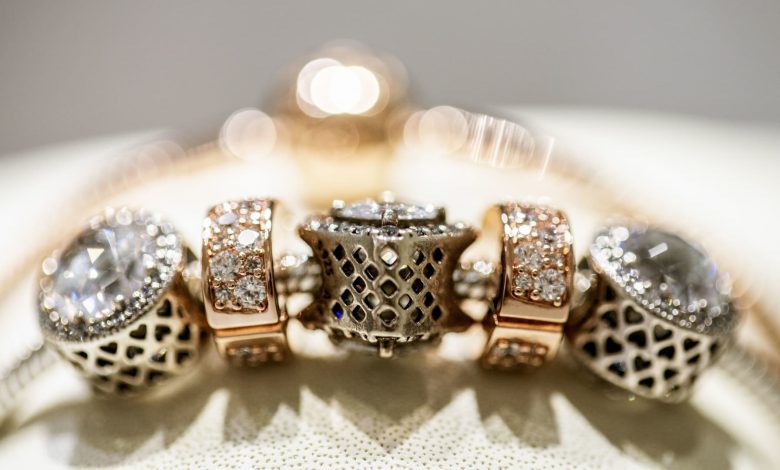Pandora warns U.S. tariffs will spark sweeping jewelry price increases

A charm bracelet on display in a Pandora store in Copenhagen, Denmark.
Bloomberg | Getty Images
Danish jewelry brand Pandora has warned of significant price increases across the affordable jewelry industry if U.S. President Donald Trump’s proposed tariff hikes come into play following the White House’s 90-day pause on the levies announced in April.
CEO Alexander Lacik told CNBC that current 10% levies on most U.S. imports were “manageable,” but he noted that if tariffs were to revert to previously announced “reciprocal” rates, then it would be game changing for jewelry manufacturers.
“Most jewelers that are in the price segment where we operate, they all import from somewhere in Asia. So you could have an argument if these tariffs remain, then it’s going to be more expensive for everybody that plays,” Lacik told Charlotte Reed.
“Therefore we should expect that the consumer pricing will see some change to it,” he added.
Pandora, known for its popular charm bracelets and silver jewelry, is heavily dependent on manufacturing in Asia, most notably Thailand but also Vietnam, India and China.
Those countries were hit on President Trump’s April 2 “Liberation Day” tariff announcement with reciprocal tariffs ranging from 26% to 46%. That prompted to the company the following day to warn of a significant potential hit to group revenues, which it valued at around 1.2 billion Danish kroner ($182 million) per year.
President Trump later announced a 90-day pause and a lower 10% tariff rate for most countries except China, though it is currently unclear what rate countries will face once that pause expires in early July.
Asked what level of price rises consumers could expect if tariffs remain in place, Lacik said Pandora had modelled a number of scenarios but that the final figure was likely to be industry-led.
“We can all speculate: is it going to be the 34[%] or 40[%],” he said. “We’ve done a number of different scenarios. But we don’t operate in isolation, so we need to see a little bit what the rest of the industry does.”
If tariffs remain at 10%, Lacik said it was unlikely the company would need to raise prices. However, if they rose to around 30%, for instance, “then the world changes.”
“There are different ways to think about this, so let’s see where it lands,” he said.
A plain sterling silver Pandora bracelet currently retails for around $75, while the company’s lab grown diamonds rings are available from $200.
Pandora on Wednesday maintained its guidance for 2025 of 7% to 8% organic growth while noting “elevated macro uncertainty.” However, it lowered its operating profit margin guidance by 50 basis points to around 24%, which Lacik attributed to weakness in the U.S. dollar.
The revised guidance excludes the impact of potential tariffs beyond the 90-day pause. However, the company said it will provide an update on the potential impact as the situation becomes clearer.
“What we have not changed for is expected changes due to whatever happens with the tariffs because, as we stand here today, I don’t know,” Lacik said.
Pandora shares were trading up 2.3% by 1:55 p.m. London time.
Pandora rules out U.S. manufacturing
Pandora currently employs around 8,000 people in the U.S., primarily across its network of stores. Nevertheless, Lacik dismissed the prospect of relocating manufacturing to the U.S. — a key strategic goal of the president’s tariff agenda — saying it wouldn’t make any “financial sense.”
“The U.S. labor cost would be completely uncompetitive,” he said. “So if we were to do this, the consumer pricing would have to significantly go up.”
Costs aside, the jewelry CEO said the country lacks the suitable skills base to produce Pandora’s handcrafted goods.
“I employ up to 15,000 craftspeople in Thailand,” he said. “I can’t find that amount of talent that actually has this craft experience in the U.S. So it’s actually not so much a matter of cost to begin with, it’s about having skilled people who can actually craft the jewelry.”
More than costs and labor, however, Lacik said he would be reluctant to boost U.S. investment due to uncertainty. It comes as companies across other sectors, including pharmaceuticals and autos, have been pledging billions of dollars to boost manufacturing in the country.
“The more worrying thing in all this, is that it’s not predictable,” Lacik said. “I think this plagues most people like myself that sit on the business side of things.”



